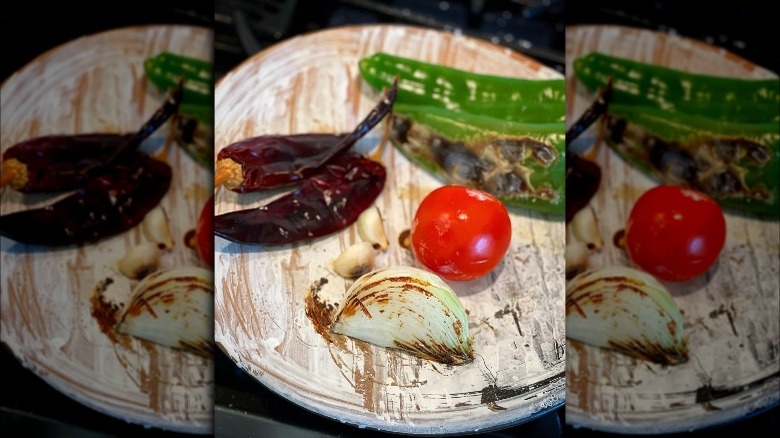Chef Marcela Valladolid Answers Instagram's Questions About Cooking On A Comal
Home cooks who are new to using a comal or are interested in investing in the traditional, ancient cookware items are in luck. Chef Marcela Valladolid offered to answers fans' questions about cooking with a comal via Instagram. She wrote, "To all the new comal owners, leave your questions here! Tell me how it's going!" Within a day, the post had more than 1,200 likes.
One person simply wrote how much they love their comal, commenting, "I've never cooked on a comal before. Until my mother in law introduced me to one. I love it! Heck I make my grill cheese on it!" Valladolid wrote back, "you can make so many things on it. I love how it toasts seeds!" However, most questions Valladolid received were about seasoning the comal.
For those who are unfamiliar with the cookware, a comal is "a round, flat griddle" that has a slight lip around the perimeter (via Master Class). Comals are traditionally native to Mexico and Central America, dating back to 700 B.C. But to use one correctly, said cookware needs to be seasoned similarly to cast iron. To do this, cal — a loose combination of dry lime and water — must be made and cooked onto the comal before it is rinsed after drying (via Ancient Cookware). This process is what confused most people who asked Valladolid questions.
Chef Marcela Valladolid offers advice on cal
One fan of Marcela Valladolid commented, "I'm having to add a layer of cal each time I use my comal. Is this normal or should I be putting a thicker layer of cal?" Valladolid explained, "if you're washing it then you're taking off all the cal. You should be able to use it a few times before reapplying if you aren't adding moisture." However, someone else noticed spotting in their cal when using the comal.
This fan commented, "I noticed you cooked the egg over the spots where the tomato and onion left a bit of moisture. Can we disregard that and continue using it until the whole surface of the comal needs the cal reapplied? Or do we add to the small spots that the tomato lifted the cal? Hope that makes sense." Valladolid responded, "it does! And I understand your nervousness around it because when I started using a comal I had all those questions and the answer it, EITHER WAY IT WILL WORK." Valladolid added that, if fans "REALLY get to know it," they will soon "be able to answer all these questions" themselves.
"The more you use it, the more your instincts will start to kick in," she added. "It'll feel weird until it isn't! Then you don't cook with rules or instructions but with instinct and heart." But her best advice might be the last thing she wrote: "Don't worry if stuff sticks, it'll still be delicious!" Just like cast iron, a comal can stick, but with time, it should get better.

